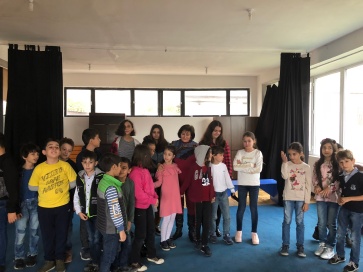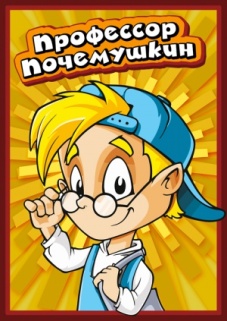

Shusha or Shushi , is a city in the disputed region of Karabakh in the South Caucasus. It has been under the control of the self-proclaimed Artsakh Republic since its capture in 1992 during the Nagorno-Karabakh War.
Shushi as a settlement is first mentioned as Shushi in the Middle Ages, with the 15th century illuminated Armenian Gospel kept on display at Yerevan’s Matenadaran being the earliest known artifact from the town. The Gospel was created in Shusha by the calligrapher Ter-Manuel in 1428. According to several sources, a settlement called Shushi served as an ancient fortress in the Armenian principality of Varanda, and had traditionally belonged to the Melik-Shahnazarian princely dynasty.
Here are some sight you may want to visit



Մեսրոպ Մաշտոցը ծնվել է Տարոն գավառի Հացեկաց գյուղում: Իր գավառում հիասքանչ կրթություն ստանալուց հետո տեղափոխվել է արքունիք` Խոսրով Դ թագավորի մոտ ծառայության: 395-ին դարձել է հոգևորական, և մեկնել Վասպուրականի Գողթն գավառը: Մեսրոպ Մաշտոցը տիրապետում էր հունարենին, պարսկերենին, ասորերենին, վրացերենին։ Մեսրոպը ցանկանում է հայկական գրեր ստեղծել և այդ մտատանջությամբ Մեսրոպը մեկնում է Սահակ Պարթևի մոտ: Վռամշապուհ արքան քաջալերելով նրանց նախաձեռնությունը պատմում է Դանիել անունով մի եպիսկոպոսի մասին, ով ստեղծել է հայերեն նշանագրեր: Սակայն Դանիելյան նշանագրերը չէին համապատասխանում հայոց լեզվի պահանջներին: Մեսրոպ Մաշտոցը իր աշակերտների հետ մեկնում է Եդեսիա` գրեր ստեղծելու: Մի օր, երբ Մեսրոպն աղոթում էր, ոչ արթուն և ոչ էլ երազի մեջ` նրա աչքին երևում է մի ձեռք, որ քարերի վրա տառերի հետքեր է թողնում: Մաշտոցը վերցնում է մագաղաթը և գրում իր աչքերին երևացած նշանագրերը: Ի զարմանս բոլորի, բոլոր նշանատառերը համապատասխանում էին հայերենի բոլոր հնչյուններին: Նա մեկնում է Սամոսատ, որտեղ թարգմանում է առաջին նախադասությունը` <<Ճանաչել իմաստությունն ու խրատը, իմանալ հանճարի խոսքերը…>>
<<Մանչուկ>>Նախագիծը` Գևորգ և Աննա Հովհաննիսյանների
Բարև փոքրիկ, ես խելացի սոխն եմ: Այսօր ես քեզ ցույց կտամ օվալը: Սա շրջան է, իսկ սա օվալ: Հիմա արի գիրք կարդանք և տեսնենք` ինչերն են լինում օվալաձև: Նայիր սա Ալեքսն է, նա օվալաձև փուչիկ ունի: Ալեքսի դեմքը նույնպես օվալաձև է: Կկարողանաս օվալաձև ևս մի առարկա գտնես: Ճիշտ է, սա օվալաձև պաղպաղակ է: Ջրում ապրում է օվալաձև ձկնիկը: Նայիր սա սուզանավ է: Այն նույնպես օվալաձև է: Սա շունիկ Տոբին է, նրա մարմինը օվալաձև է, ականջները` նույնպես: Նա իր տիրոջ համար հողաթափեր է տանում: Ինչ ես կարծում, ինչ ձևի են հողաթափերը: Ճիշտ է օվալաձև, իսկ դու նկատեցիր, որ գորգը նույնպես օվալաձև է : Հետաքրքիր է, իսկ այս նկարի մեջ ինչ-որ օվալաձև բան կա : Արի ուշադիր նայենք: Իհարկե դա օվալաձև հայելին է, ապրես փոքրիկ:Կա նաև ծաղիկի օվալաձև թերթիկները: Ապրես դու կարողացար գտնել նկարի միջի բոլոր օվալները: Իսկ հիմա արի օվալ նկարենք, դա իհարկե հեշտ չէ, բայց ես քեզ ամենահեշտ ձևը ցույց կտամ: Թղթի վրա կոպեկ դիր և ընդգծիր այն, ստացվեց շրջան, հետո դրա կողքին ևս մեկ շրջան նկարիր: Իսկ հիմա զգուշորեն միացրու դրանք և ներկիր: Չտխրես, եթե օվալը մի փոքր ծուռ ստացվի, մի քանի անգամ էլ փորձիր և քեզ մոտ ամեն ինչ կստացվի: Հաջողություն եմ մաղթում քեզ: Մինչ հանդիպում, փոքրիկ :
Նայիր Պրոֆեսոր Ինչուիկի նոր սերիան

<<Մանչուկ>> Նախագիծը` Գևորգ և Աննա Հովհաննիսյանների
Հետաքրքիր է` ինչու է ձյունը սպիտակ: Ձյան փաթիլները կամված են ջրից, այն սառչում է` վերածվելով վեցանկյան կտորների: Երևի դու կասես, որ սառույցը թափանցիկ է: Դու ճիշտ ես: Իրականում ամեն փաթիլ նույնպես թափանցիկ է: Բայց ինչու է փաթիլներից կազմված ձյունը սպիտակ: Բանն այն է, որ փաթիլները հողի վրա ընկնելով և միասին հավաքվելով այլևս չեն կարող արևի լույսը անցկացնել: Արևի ամեն մի շող ընկնելով ձյան վրա բեկվում է հարյուրավոր փաթիլների կողմից, մինչև այդ շողը ամբողջովին դուրս չի գալիս: Իսկ երբ ամբողջ լույսը անդրադառնում է մենք ձյունը տեսնում ենք սպիտակ: Եթե արևի լույսը լիներ դեղին կամ կարմիր, ապա ձյունը նույն պես կտեսնեինք դեղին կամ կարմիր: Արևածագին կամ մայրամուտին մենք ձյունը տեսնում ենք վարդագույն: Այդ պատճառով ձյունը նույնպես կարող է լինել վարդագույն: